Abstract
The present paper describes a new experimental scheme for following diffusion and chemical reaction systems of fluorescently labeled molecules in the nanomolar concentration range by fluorescence correlation analysis. In the dual-color fluorescence cross-correlation spectroscopy provided here, the concentration and diffusion characteristics of two fluorescent species in solution as well as their reaction product can be followed in parallel. By using two differently labeled reaction partners, the selectivity to investigate the temporal evolution of reaction product is significantly increased compared to ordinary one-color fluorescence autocorrelation systems. Here we develop the theoretical and experimental basis for carrying out measurements in a confocal dual-beam fluorescence correlation spectroscopy setup and discuss conditions that are favorable for cross-correlation analysis. The measurement principle is explained for carrying out DNA-DNA renaturation kinetics with two differently labeled complementary strands. The concentration of the reaction product can be directly determined from the cross-correlation amplitude.
Full text
PDF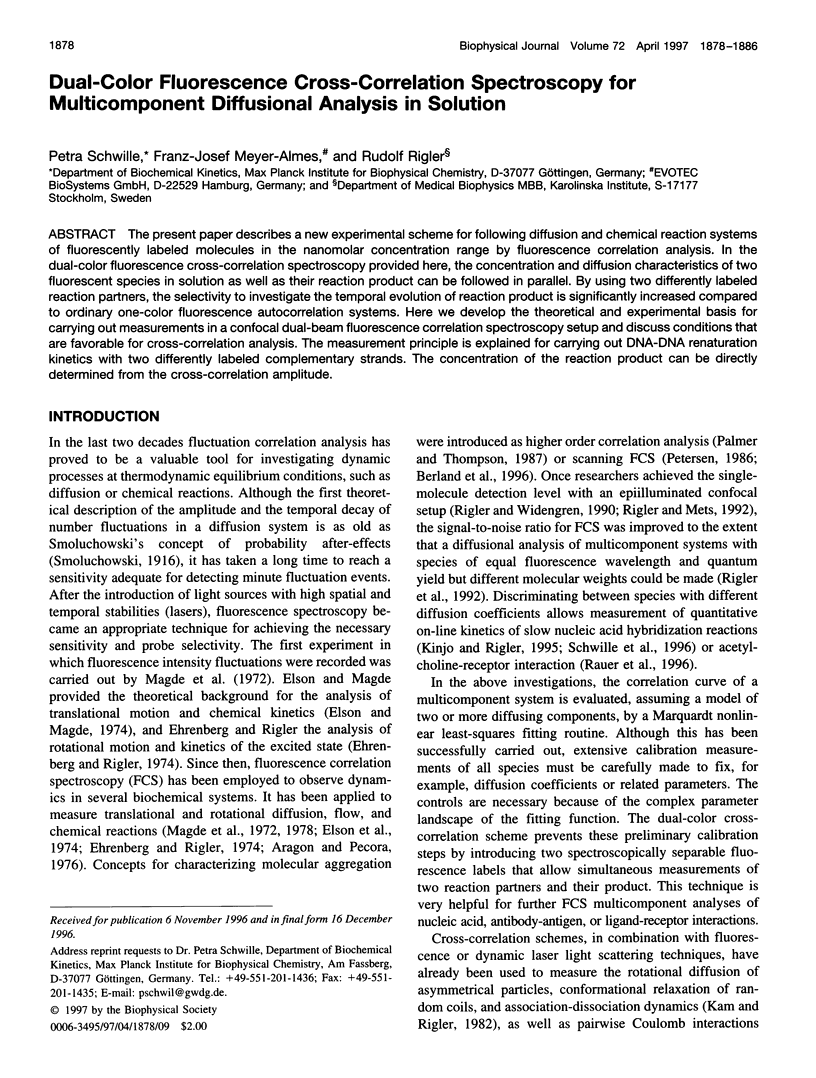
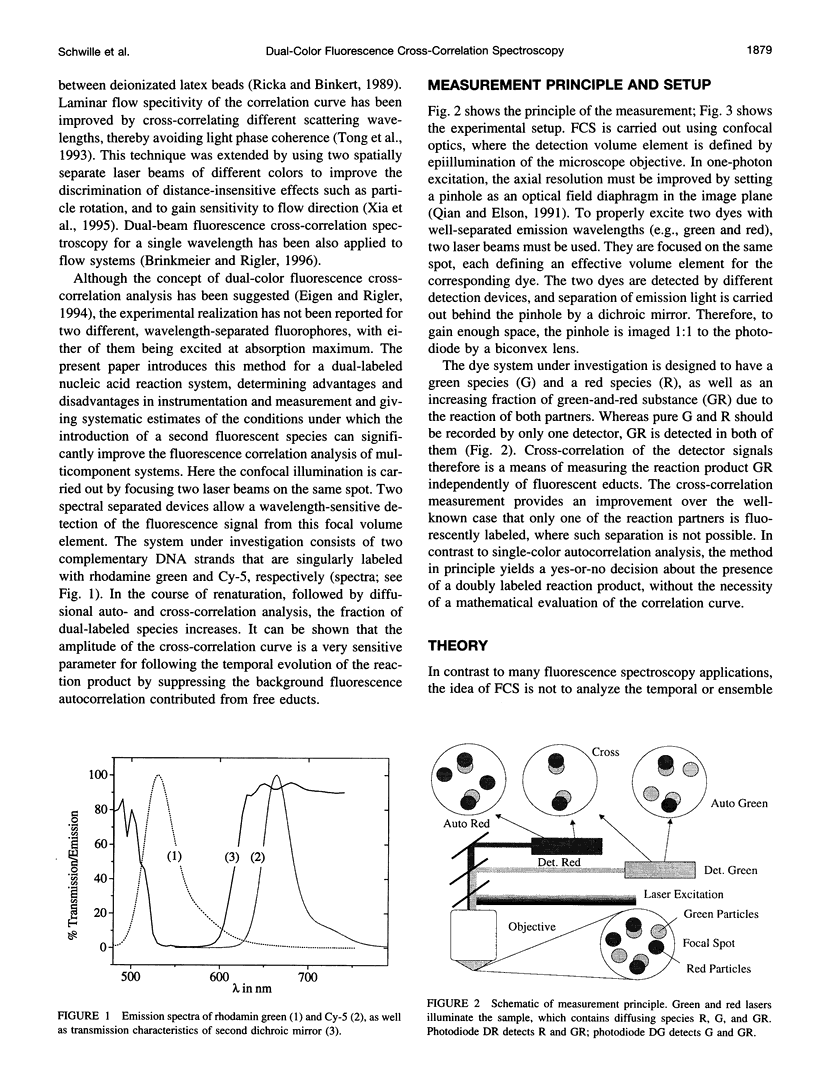
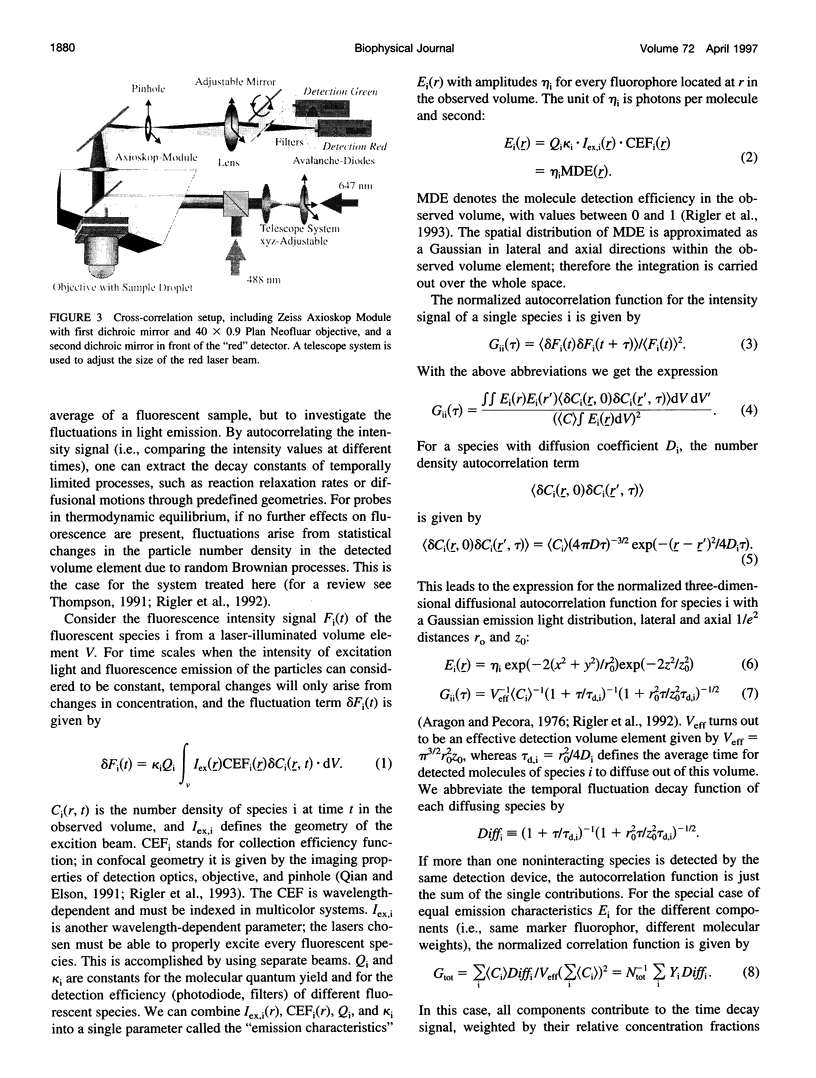
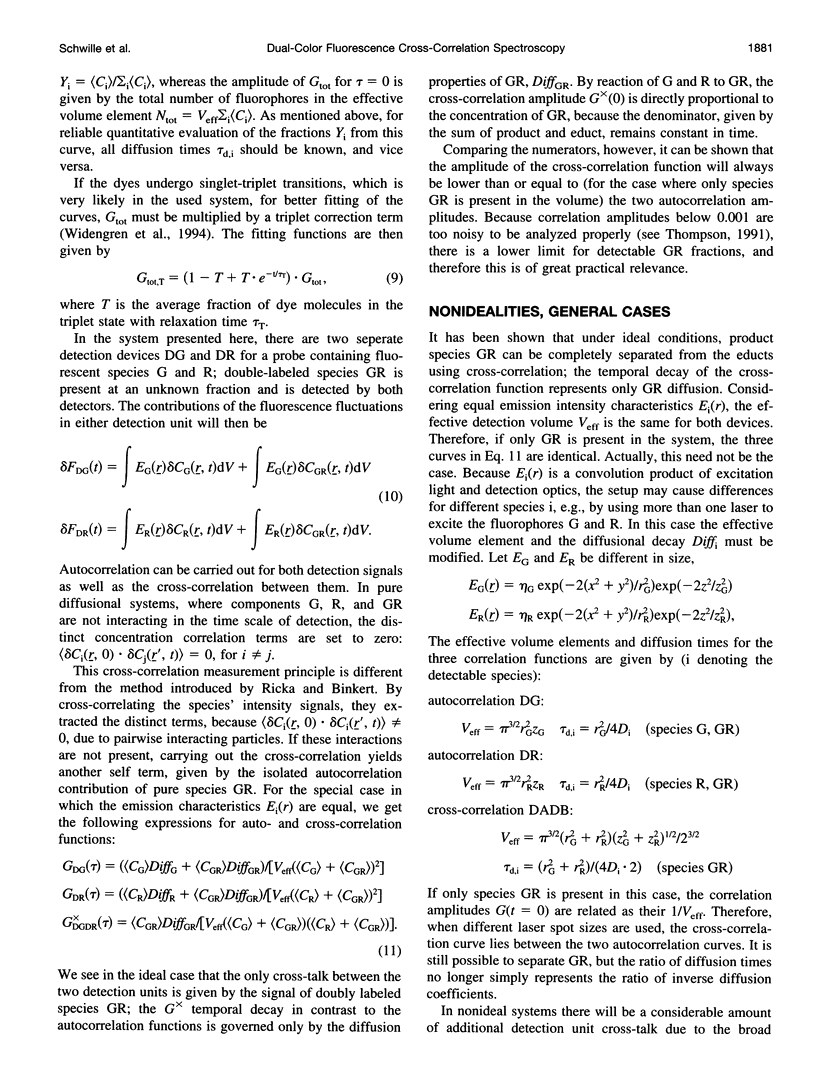
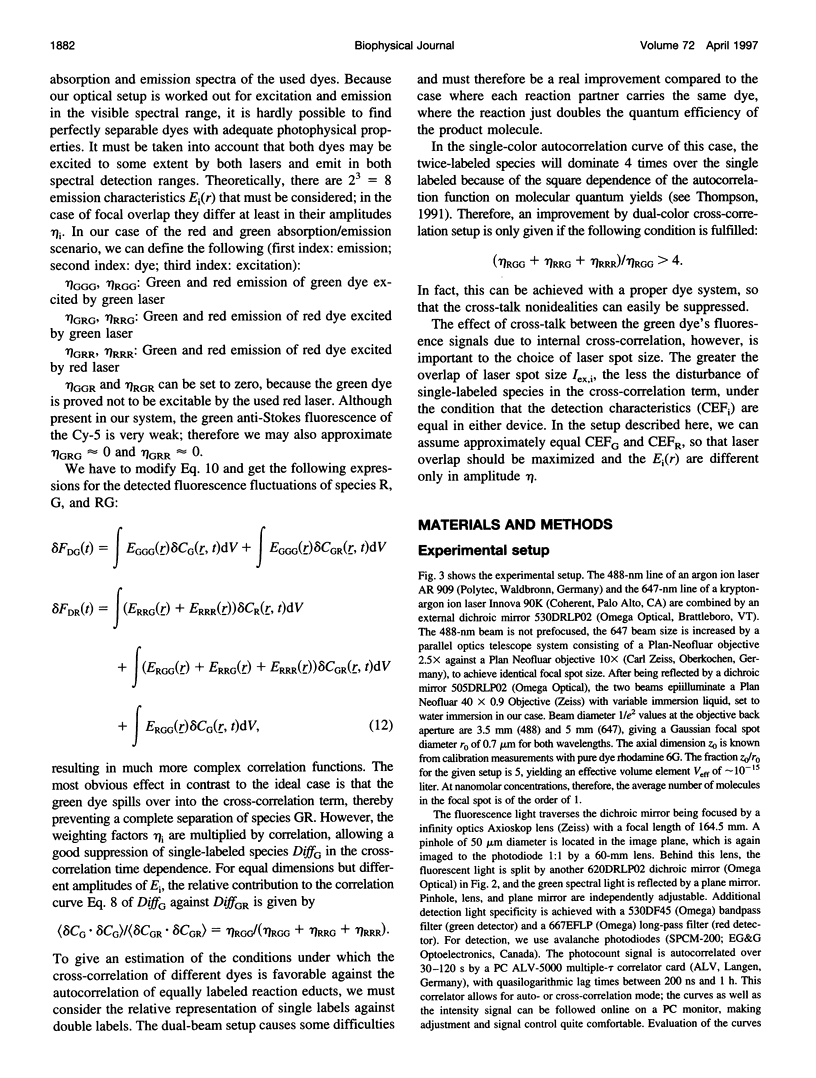
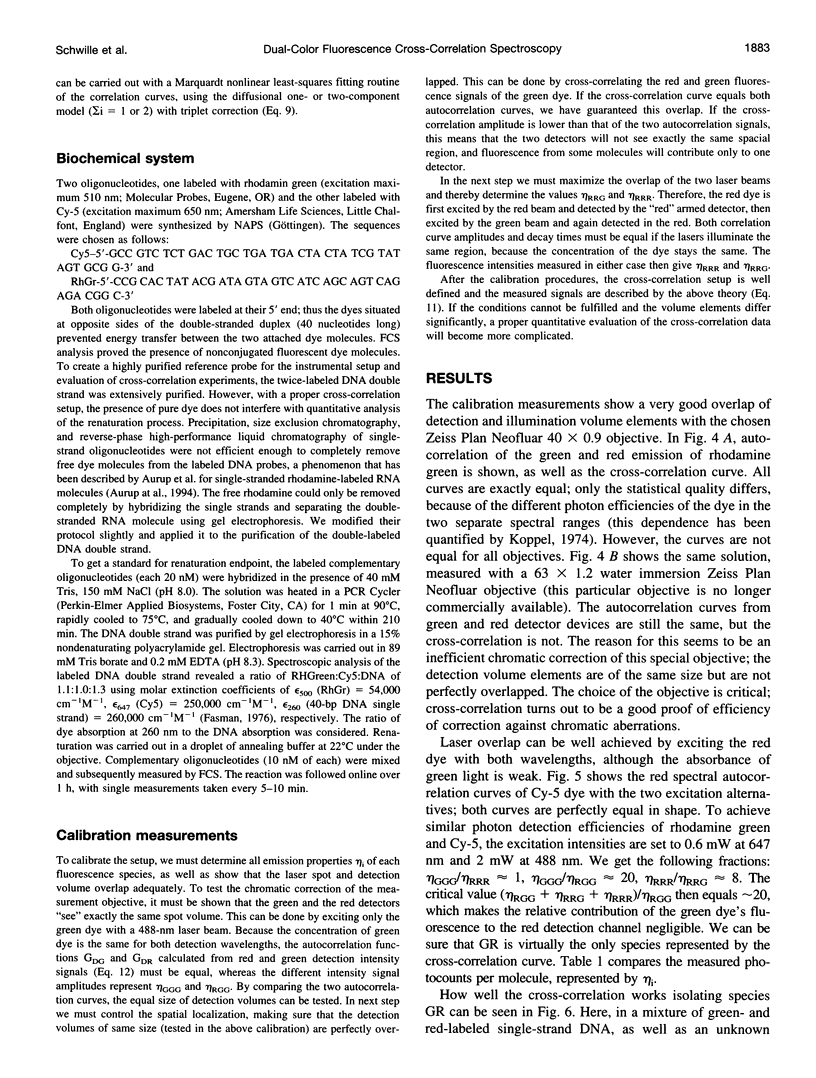
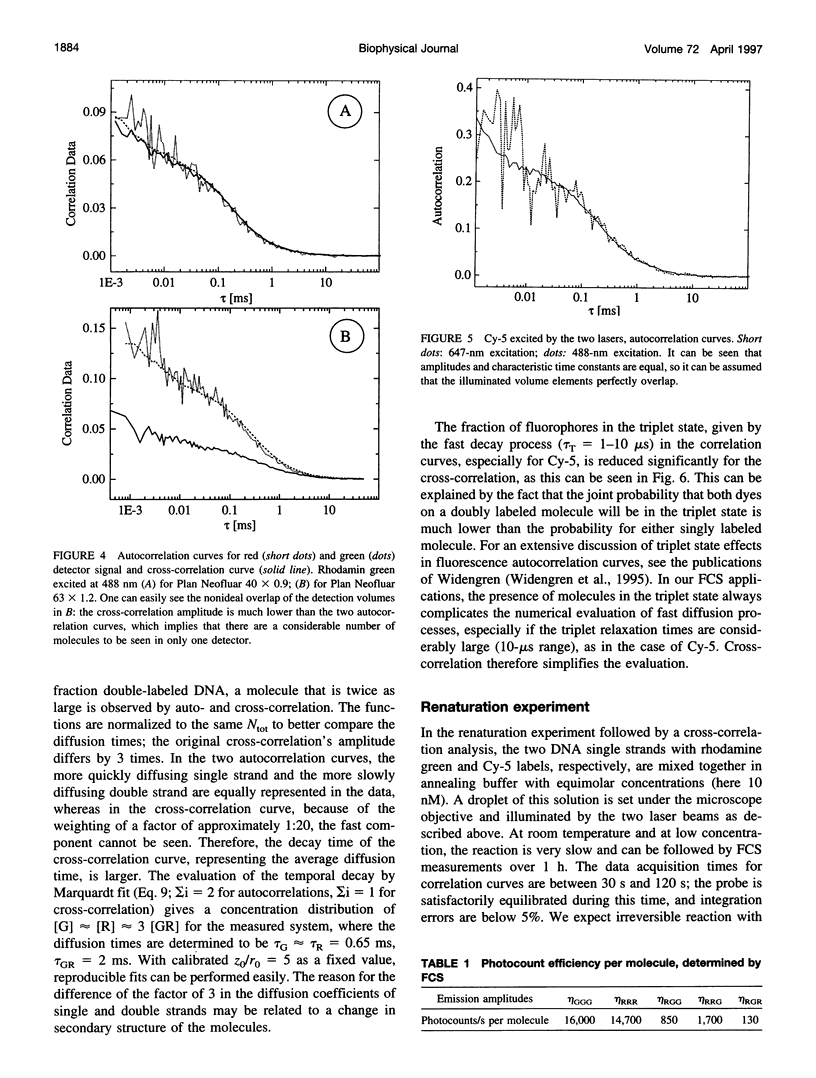
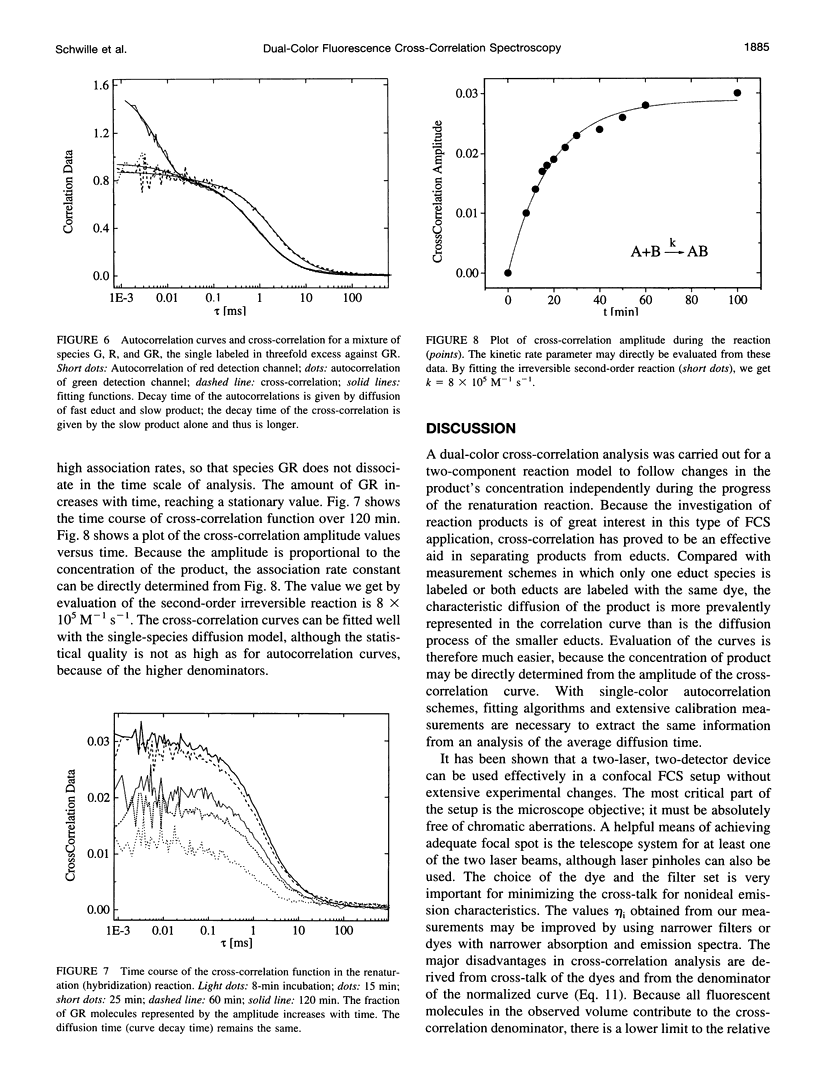

Images in this article
Selected References
These references are in PubMed. This may not be the complete list of references from this article.
- Aurup H., Tuschl T., Benseler F., Ludwig J., Eckstein F. Oligonucleotide duplexes containing 2'-amino-2'-deoxycytidines: thermal stability and chemical reactivity. Nucleic Acids Res. 1994 Jan 11;22(1):20–24. doi: 10.1093/nar/22.1.20. [DOI] [PMC free article] [PubMed] [Google Scholar]
- Berland K. M., So P. T., Chen Y., Mantulin W. W., Gratton E. Scanning two-photon fluctuation correlation spectroscopy: particle counting measurements for detection of molecular aggregation. Biophys J. 1996 Jul;71(1):410–420. doi: 10.1016/S0006-3495(96)79242-1. [DOI] [PMC free article] [PubMed] [Google Scholar]
- Eigen M., Rigler R. Sorting single molecules: application to diagnostics and evolutionary biotechnology. Proc Natl Acad Sci U S A. 1994 Jun 21;91(13):5740–5747. doi: 10.1073/pnas.91.13.5740. [DOI] [PMC free article] [PubMed] [Google Scholar]
- Kam Z., Rigler R. Cross-correlation laser scattering. Biophys J. 1982 Jul;39(1):7–13. doi: 10.1016/S0006-3495(82)84484-6. [DOI] [PMC free article] [PubMed] [Google Scholar]
- Kinjo M., Rigler R. Ultrasensitive hybridization analysis using fluorescence correlation spectroscopy. Nucleic Acids Res. 1995 May 25;23(10):1795–1799. doi: 10.1093/nar/23.10.1795. [DOI] [PMC free article] [PubMed] [Google Scholar]
- Koppel D. E., Axelrod D., Schlessinger J., Elson E. L., Webb W. W. Dynamics of fluorescence marker concentration as a probe of mobility. Biophys J. 1976 Nov;16(11):1315–1329. doi: 10.1016/S0006-3495(76)85776-1. [DOI] [PMC free article] [PubMed] [Google Scholar]
- Magde D., Elson E. L., Webb W. W. Fluorescence correlation spectroscopy. II. An experimental realization. Biopolymers. 1974 Jan;13(1):29–61. doi: 10.1002/bip.1974.360130103. [DOI] [PubMed] [Google Scholar]
- Oehlenschläger F., Schwille P., Eigen M. Detection of HIV-1 RNA by nucleic acid sequence-based amplification combined with fluorescence correlation spectroscopy. Proc Natl Acad Sci U S A. 1996 Nov 12;93(23):12811–12816. doi: 10.1073/pnas.93.23.12811. [DOI] [PMC free article] [PubMed] [Google Scholar]
- Palmer A. G., 3rd, Thompson N. L. Molecular aggregation characterized by high order autocorrelation in fluorescence correlation spectroscopy. Biophys J. 1987 Aug;52(2):257–270. doi: 10.1016/S0006-3495(87)83213-7. [DOI] [PMC free article] [PubMed] [Google Scholar]
- Petersen N. O. Scanning fluorescence correlation spectroscopy. I. Theory and simulation of aggregation measurements. Biophys J. 1986 Apr;49(4):809–815. doi: 10.1016/S0006-3495(86)83709-2. [DOI] [PMC free article] [PubMed] [Google Scholar]
- Rauer B., Neumann E., Widengren J., Rigler R. Fluorescence correlation spectrometry of the interaction kinetics of tetramethylrhodamin alpha-bungarotoxin with Torpedo californica acetylcholine receptor. Biophys Chem. 1996 Jan 16;58(1-2):3–12. doi: 10.1016/0301-4622(95)00080-1. [DOI] [PubMed] [Google Scholar]
- Rika J, Binkert T. Direct measurement of a distinct correlation function by fluorescence cross correlation. Phys Rev A Gen Phys. 1989 Mar 1;39(5):2646–2652. doi: 10.1103/physreva.39.2646. [DOI] [PubMed] [Google Scholar]
- Schwille P., Oehlenschläger F., Walter N. G. Quantitative hybridization kinetics of DNA probes to RNA in solution followed by diffusional fluorescence correlation analysis. Biochemistry. 1996 Aug 6;35(31):10182–10193. doi: 10.1021/bi960517g. [DOI] [PubMed] [Google Scholar]
- Walter N. G., Schwille P., Eigen M. Fluorescence correlation analysis of probe diffusion simplifies quantitative pathogen detection by PCR. Proc Natl Acad Sci U S A. 1996 Nov 12;93(23):12805–12810. doi: 10.1073/pnas.93.23.12805. [DOI] [PMC free article] [PubMed] [Google Scholar]




